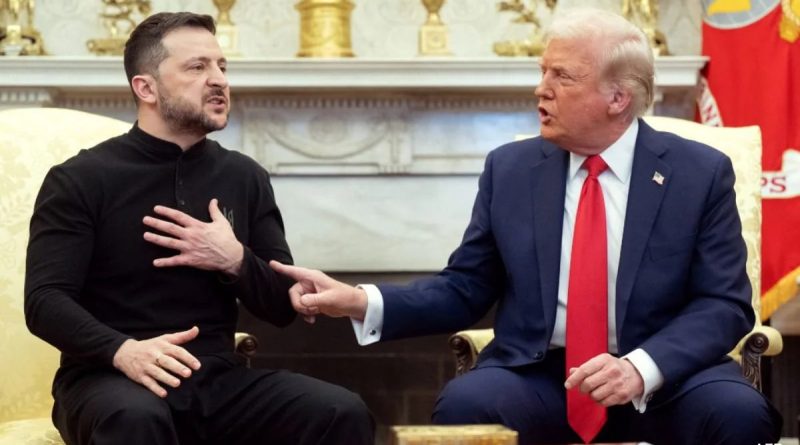The Events Leading Up to Trump’s Request for Zelensky to Depart the White House
Amidst a tense meeting in the Oval Office, US President Donald Trump lashed out at Ukrainian President Volodymyr Zelensky, leading to a dramatic exit and escalating tensions between the two leaders. The incident, which occurred on Friday, was a result of Trump’s frustration with Zelensky’s perceived lack of readiness for peace negotiations with Russia.
The Oval Office Meltdown
During the meeting, Trump and Vice President JD Vance reportedly berated Zelensky, accusing him of not showing enough gratitude for US support in Ukraine’s ongoing conflict with Russia. Trump went as far as to suggest that without US assistance, Ukraine would have been overrun by Russian forces, implying that Zelensky had no leverage in negotiations.
The heated exchange culminated in Trump telling Zelensky to either make a deal or face the consequences, leading to the Ukrainian leader’s abrupt departure from the White House. Trump later took to social media to express his disappointment, stating that Zelensky could return when he was ready for peace.
International Reactions
The fallout from the incident was swift, with European leaders rushing to show support for Ukraine and condemn Trump’s behavior. Polish Prime Minister Donald Tusk reassured Zelensky that he was not alone in the fight against Russian aggression, while British Prime Minister Keir Starmer vowed unwavering support for Kyiv.
In contrast, far-right Italian Prime Minister Giorgia Meloni called for immediate action from the US and Europe to address the situation in Ukraine. Meanwhile, US Senate Democrat Chuck Schumer accused Trump and Vance of doing Russian President Vladimir Putin’s bidding.
Russian Response
Surprisingly, Russia welcomed the breakdown in relations between the US and Ukraine, with former Russian President Dmitry Medvedev labeling Zelensky as an “insolent pig.” Russian officials expressed satisfaction with the outcome of the meeting, suggesting that Trump and Vance had shown restraint in dealing with Zelensky.
Domestic Reactions
Back in the US, Trump’s Republican Party echoed the sentiments of the Russian government, blaming Zelensky for the conflict. Senator Lindsey Graham questioned the viability of a partnership with Zelensky, while Ukraine’s military and foreign minister rallied behind their leader, praising his bravery in the face of adversity.
The Compromise Dispute
The root of the conflict between Trump and Zelensky stemmed from the former’s insistence on compromising with Russia to reach a truce. Zelensky, however, stood firm in his refusal to make concessions to a “killer” on Ukrainian soil. The disagreement escalated into a public confrontation, with Vance accusing Zelensky of disrespect.
Trump’s Controversial Stance
Trump’s handling of the situation raised eyebrows in Kyiv and among US allies, as he positioned himself as a mediator between Putin and Zelensky. Despite claiming to have spoken with Putin multiple times, Trump refused to condemn the Russian invasion and expressed trust in Putin’s ability to uphold a ceasefire.
As the conflict between Russia and Ukraine continued on the ground, the fallout from the Oval Office meltdown highlighted the deep divisions and complex geopolitical dynamics at play in the region. The future of US-Ukraine relations remains uncertain, as both leaders navigate the delicate balance between peace negotiations and national interests.

